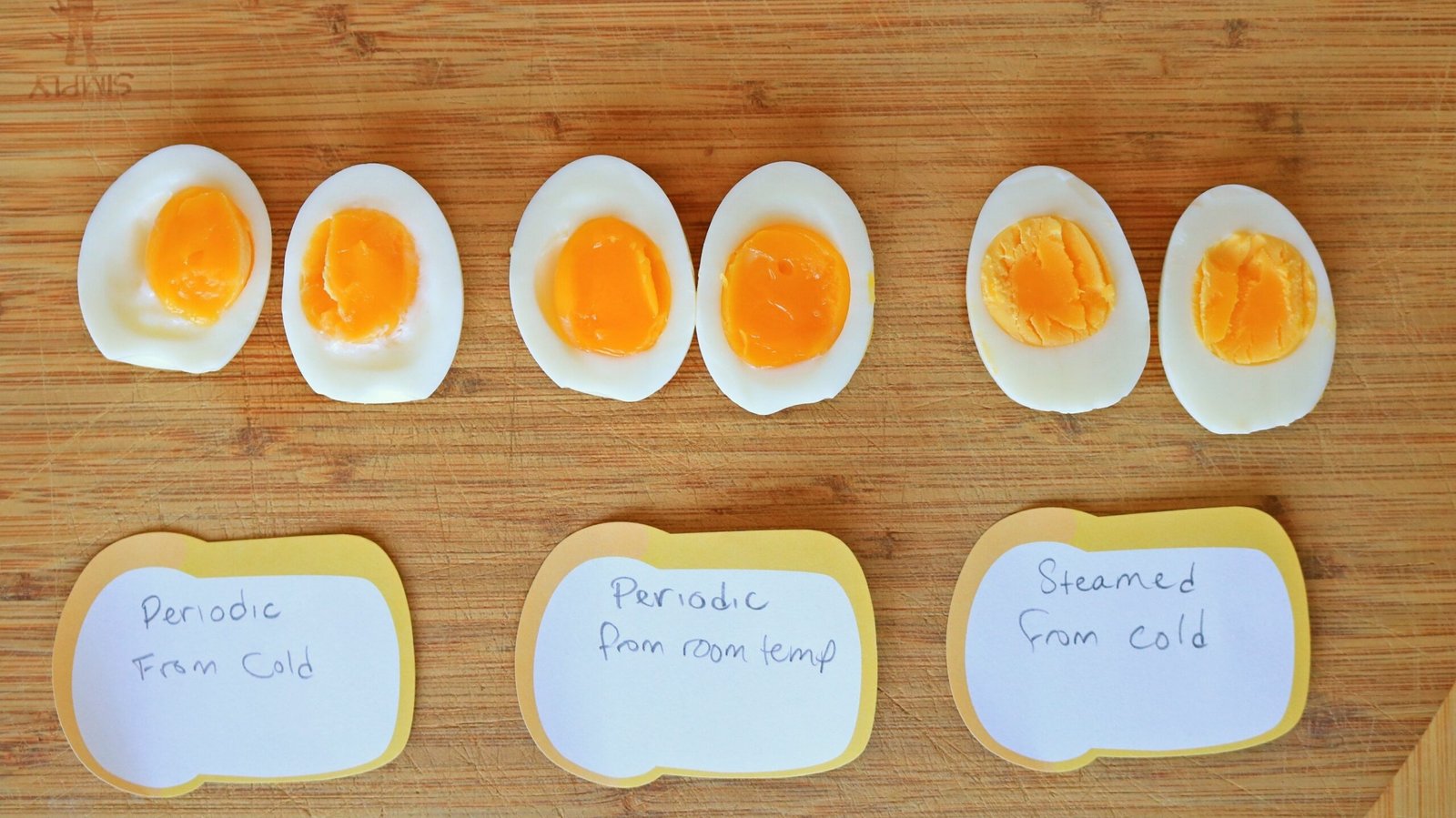We may earn a commission from links on this page.
Everyone has their opinion on how to make a perfectly boiled egg—is it boiled from a cold start, hot start, steamed, pressure-cooked, or sous vide? This argument will rage all the more feverishly as periodic cooking enters the fray. According to science, periodic cooking yields the perfect boiled egg. The test required two pots of water at different temperatures, a two-minute timer, a notepad, and 32 minutes of uninterrupted focus. I must admit, the results were fantastic—but I’d never do it again.
The special thing about eggs is that you have two substances: the egg white and the egg yolk, one encapsulating the other. As this study details, since those two components have different compositions, they require different cooking temperatures to reach perfection. But unless you literally cook them separately, how are you supposed to cook each part to a different temperature without overcooking the white? Why, with the periodic cooking method, of course.
What is periodic cooking?
Periodic cooking in regards to boiled eggs is a process where the cooking temperature alternates, in this case from boiling water (212°F) to warm water (86°F), over the course of 32 minutes until the white and the yolk proteins cook to their individual state of perfection. No overcooked rubbery whites or dusty yolks. Instead, a yolk that is just-gelled across the entire orb, and a white that is set, but not gummy.

Credit: Allie Chanthorn Reinmann
The group of scientists who conducted this experiment had a controlled environment, spectroscopy, and tasting experts at their disposal to settle on the most perfectly texture egg. Then they wrote up instructions on how to do the periodic cooking method at home. So I tried it out, of course.
How to make the perfect boiled egg
Set up two pots of water. Bring the smaller one up to boiling. This pot will be boiling for the entire time. Fill a second, larger pot up about halfway with warm water.

Credit: Allie Chanthorn Reinmann
Once these pots are at the right temperature, put the egg into the boiling water for two minutes, then take it out with a slotted spoon and drop it into the warm water for two minutes. You’ll do this cycle a total of eight times, which ends up being 32 minutes.
If you want to try this method at home, here are some helpful tips:
-
You’ll need a thermometer. A probe thermometer (I used the Thermapen One) or a low temperature clip-on thermometer. To me, 86°F water feels just pleasantly warm to someone who has cold hands.

Credit: Allie Chanthorn Reinmann
-
Use a big pot for the warm water. When the hot egg plunges in a few times, it won’t change the temperature of a great pool of water as much as a small one. Still, keep a cup of cold water close by if you have to cool it down, and take the temperature every time the hot egg goes in.
-
Have a kettle of hot water nearby. Since you’ll be boiling that smaller pot of water for a half hour, be prepared for the water level to decrease. If you see the egg poking above the surface, top up the boiling water when the egg is in the warm water pot.
-
Keep a notepad. Eight back-and-forths is a trap: You’re definitely going to forget what round you’re on unless you keep a tally. I did a tally mark every time I put the egg in the warm water, signaling the completion of one cycle.
Is the perfect boiled egg worth it?

Credit: Allie Chanthorn Reinmann
As much as I enjoyed testing out this method of egg cookery, no, it is not worth it. Between the set-up, the amount of space needed, the attention required, and the length of time, the final result did not rock my world. And seeing as I usually crush boiled eggs on toast, the subtle differences are lost.
I made three eggs so I could taste them all side by side. Crucially, the instructions from Science News do not indicate if the egg should be a fridge-cold or room temperature egg, so I did both. As a control, I made a steamed egg the way I normally do to get a set yolk.
The cold egg and the room temperature egg produced similar results, which I think is good news if you want to do this at home. The fridge-cold egg had a noticeable barely-set ring of white around the yolk, while the room temperature egg did not have this. Judging from the results, I’d say the Science News article wants us to use room temp eggs.
The yolk of the periodically cooked egg was markedly different from other boiled egg yolks I’ve eaten. So if you’re a big yolk connoisseur, you may like this. It’s velvety and has a consistent texture throughout. Traditional-method boiling yields egg yolks that have a less cooked center and become more cooked closer to the white.
The white was delicate and easy to bite through, but I don’t think boiling produces very rubbery whites anyway, so the difference is rather subtle. I only noticed because I tasted the eggs side by side. Since “perfect” is in the belly of the beholder, I’ll likely be sticking with my usual fried and scrambled.
This articles is written by : Nermeen Nabil Khear Abdelmalak
All rights reserved to : USAGOLDMIES . www.usagoldmines.com
You can Enjoy surfing our website categories and read more content in many fields you may like .
Why USAGoldMines ?
USAGoldMines is a comprehensive website offering the latest in financial, crypto, and technical news. With specialized sections for each category, it provides readers with up-to-date market insights, investment trends, and technological advancements, making it a valuable resource for investors and enthusiasts in the fast-paced financial world.
